Science Article Summary
The advances in all fields of science seem to come at an exponential rate. What we study today may be modified or amended tomorrow just as much of today's knowledge is rooted in the past. An educated person reads throughout an entire lifetime. Articles should be from a respectable source such as: Scientific American, Discover, Science News, Natural History, Smithsonian, Bioscience, etc. There are two methods of submission for reviewing at article, consult your instructor on specific details for your assignment.

Science News Sources
Science News Online Science Daily New York Times - Science Nature: Science Journals BBC Science Discover Magazine Scientific American Science Friday at NPR Science.org Reuters Science
1. Copy or print the article, you will attach it to your essay.
2. Summarize the article in your own words! The summary must be printed with a word processor. The summary should contain the following elements. Your teacher may allow you to submit via email with a link to the article instead.
- Introduction (2 point). Introduce the article by describing or defining the major ideas covered in the article. Explain why this subject is important, and how it relates to our unit of study.
- Content Summary (3 points). They key word here is summary . Do not copy the content of the entire article. What was the article all about? What were the main concepts and ideas that were discussed? What was the question(s) the author was investigating? What methods did he/she use? What evidence was uncovered to support the main body of the article
- Evaluation (3 points). Restate the main areas of importance in the magazine article. With your perspective as an AP Biology student, discuss the quality of the article with regard to its relevance, importance, readability, interest level, and scientific content. Explain why you would or would not recommend it to the other members of your class.
- Writing style (1 point). This is a college level course, and you are expected to write using appropriate grammar, sentence structure and formatting. You are also expected to use your own words when summarizing, do not plagiarize!
- Relevance ( 1 point ). Article relates to the unit of study.
All summaries should not exceed a page in length. You will lose a point if you fail to attach or link a copy of the article to your summary.
Submission on Discussion Forum
In this alternative method, you will discuss your article on a digital forum or social network. The guidelines are similar to the essay submission but you are also required to respond on the forum and engage in discussion about articles summarized by your peers.
- Introduction (2 pts). Introduce the article by describing or defining the major ideas covered in the article. Explain why this subject is important, and how it relates to our unit of study. Include a link to the article you are summarizing
- Content Summary (3 pts). They key word here is summary . Do not copy the content of the entire article. What was the article all about? What were the main concepts and ideas that were discussed? What was the question(s) the author was investigating? What methods did he/she use? What evidence was uncovered to support the main body of the article
- Relevance and Discussion (2 pts). Explain why you chose this article, why it is interesting to you or in the context of the biology class or unit. Ask a question or state an opinion to prompt further discussion of the topic
- Discussion (3 pts). On the forum, read other summaries and respond in an appropriate and meaningful way. Also, respond to your own summary and discussion thread when others post.
Discussion Guidelines Meaningful and New Ideas: Ideas examine topic from new perspective that contributes to group understanding of topic Message Coherence: Messages explain issues, provide new perspectives, effectively questions, or elaborates on topic Relevance of Replies to Other Messages: Responses elaborate, contradict,modify, or explain the original messag
Rubric for Forum Analysis
Introduction: ____0 ____1 ____2 ____3 Content Summary: ____0 ____1 ____2 ____3 Relevance & Prompt: ____0 ____1 ____2 ____3 Discussion Responses: ____0 ____1 ____2 ____3 Total Points _____ out of 12
Other Resources on Analyzing Scientific Texts
Analyze an Article from a Scientific Journal Annotate Text for Close Reading Article of the Week Article Summary Article Summary for Kids - rewrite a journal for a younger audience
It’s a wonderful world — and universe — out there.
Come explore with us!
Science News Explores
Extra extra read all about science.
Teachers and experts share their secrets on using the news to enrich science class
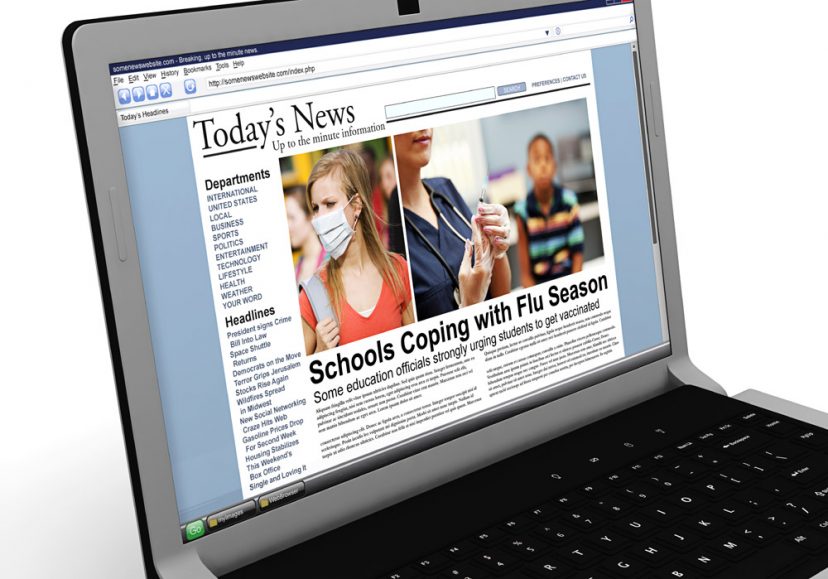
Currents events bring the outside world into the science classroom. They both make teaching more effective and increase the relevance of what students learn.
sjlocke/iStockphoto
Share this:
- Google Classroom
By Andrew Bridges
July 25, 2012 at 2:52 pm
When Sharon Reuter gives her sixth-grade science students a news story to read over the weekend, their response often brings a smile to her face.
“ Yay! No homework! ”
The assignment is, of course, very much homework. It includes plenty for her students to read, new vocabulary words to define and questions to answer, all on a standard form. Reuter’s students must find the who, when, where and what in the science article, whether it’s about Mount St. Helens rumbling back to life or the latest outbreak of food-borne illness. They also must identify the article’s claims, pinpoint any supporting evidence and brainstorm a potential related career.
Reuter knows her students always look forward to the task. That is because a well-planned current events assignment can tap directly into what interests and motivates them most.
“That is one of the keys of being a good teacher: Tricking kids into wanting to learn,” says Reuter, who teaches at Washington Middle School in inner-city Seattle.
Making current events a routine part of science instruction can help reinvigorate student interest in the subject, say teachers and academic experts.
“For me, current events are one way to engage young people in real-world discussions of the applicability of science,” says Robert Simmons, a professor in the education department of Loyola University Maryland and a former middle-school science teacher. “Students have asked me, ‘Why are we learning this?’ If we cannot answer that question, we need to go back to the drawing board and figure it out. The answer cannot be, ‘Because it’s on the test.’”
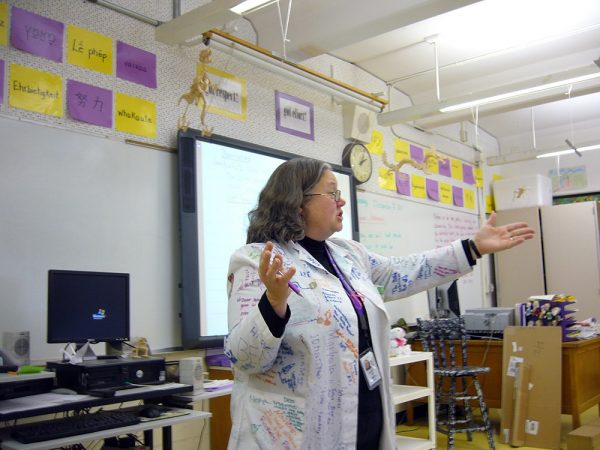
It’s no mean feat to link a science story in the news to a middle- or high-school science curriculum in an engaging and ultimately effective way, teachers tell Science News for Kids .
“Realistically, when students walk away, they will remember only a small percentage of the content,” says Brendan Casey, who teaches eighth-grade physical science at Joan MacQueen Middle School in Alpine, Calif. “The part they will remember is what relates to them. So you have to relate the content to what they care about — not what you care about.”
Casey’s students create “interactive” notebooks, pasting an article on one page and using the facing page to create a summary that combines text and illustration. They can then formulate questions for each paragraph of the news story, moving from queries that can be answered in the article to those that may be inferred from it. The goal is to eventually have students answering questions by thinking beyond what they have read.
This approach to using current events in the science classroom confers a wide range of benefits. Just reading about scientists experimenting in the lab or working in the field can be an eye-opener for students who have never considered career options beyond, say, professional athlete or recording artist.
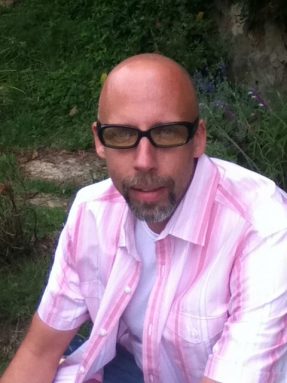
Supplementing science class with current events demands time and effort, of course. However, doing so — even in this era of “teaching to the test” — can aid in test preparation, some teachers say, especially given the shrinking volume of students’ nonfiction reading across all subjects. The critical-thinking skills that apply to reading about current events also apply in a test environment, educators add.
Reading news stories is also good preparation for emulating scientists. “After all, scientists spend much more of their time reading and writing than they do doing experiments,” says Brittany Franckowiak. This first-year teacher at Wilde Lake High School in Columbia, Md., introduces as much primary data — including the very latest NASA climate change findings — into her classroom as possible.
Their go-to media
So what materials do teachers rely on most when using current events to augment their science instruction? Generally, they seek news stories that are timely, highly readable and tied, even if tenuously, to the curriculum. Articles that feature scientists at work, come in easy-to-print formats, include actual data and provide a glossary and questions all remain teacher favorites.
Their go-to sources, beyond Science News for Kids , include Scholastic Science World , National Geographic Extreme Explorer and, for older students, Science News , New Scientist and Discover .
In general, teachers say, the more yuck, the more luck they have in engaging students.
“I gave my students a story about bedbugs and about 100 percent of the kids handed in the assignment, which wasn’t normal,” says Esther Innis, a seventh-grade science teacher at Bloomfield Middle School in New Jersey. The gross-out factor seemed to really hook them and keep them, she says.
Others are going beyond media coverage and dipping into original research — assigning passages from, say, Charles Darwin’s On the Origin of Species or even peer-reviewed studies edited for classroom use. The National Center for Case Study Teaching in Science at the University at Buffalo in New York is one such source. Another is a project led by Bill Klemm, a Texas A&M University neuroscientist who provides adapted peer-reviewed papers and allied lesson plans for teachers to download. Both resources provide content to teachers for free.
“The idea is to take a topic kids care about, like test anxiety or concussions in sports, and find a research paper on that topic and rewrite the paper so they can understand it,” Klemm says.
He’s tested the adapted papers on middle school and high school students and even undergraduates. If tailored correctly, he says, the material will allow even young kids to understand the data — and sometimes appropriately challenge whether the authors of the original paper interpreted their findings correctly.
Hunting for something germane
Incorporating current events in the classroom is rarely as easy as running off a few dozen copies of whatever science story appeared last week in print or online. Teachers lament just how difficult it can be to find articles that are appropriate not only for whom they teach, but also for how, when, why and where.
“It’s definitely an area where teachers must try to find their own supplemental material,” says Mary Ellen Wolfinger, a sixth-grade science teacher at Takoma Park Middle School in Silver Spring, Md.
For teachers like Catherine White, the list of what isn’t appropriate for her high school chemistry students can rival the list of what is.
“If it’s strictly a feature article and gives information but doesn’t talk about specific research, I don’t use it. If it just doesn’t support anything in my curriculum, I don’t use it,” says White, who teaches science primarily to students for whom English is a second language at East High School in Kansas City, Mo.
So what does work? White, for one, looks for news stories that neither dumb down the science nor dress it up with cute language.
“That’s what I like about Science New for Kids . Kids need plain, good writing about things that are important in science,” White says. “We are selling kids short if you have to make it so sexy that you skip over the content.”
When teachers do find an article that fits the bill, they stash it away — Wolfinger recently did so with a local news story about butterflies and global warming. The really good stories sometimes get trotted out, year after year.
“Every fall I do a unit on hurricanes. Science News for Kids had an article on hurricanes in 2004 I have been using ever since,” says Innis, the seventh-grade science teacher. Old Science News for Kids feature stories on French fries and ice cream are other perennial favorites, she adds.
When teachers search for engaging content, they sometimes fail to turn up the perfectly suited article. Reuter, for example, says she is still looking for a news story that she can peg to the laboratory safety unit she teaches each fall.
Making kids work
One academic expert favors allowing students to do the legwork in finding current events that interest them. It’s then up to the teacher to help link what students turn up to the subject at hand.
“The goal should be to take not what adults think of as interesting stories, but what kids are bumping into on the Internet or TV and then use it as a launching pad for what you want to cover in the classroom,” says Duke University biologist Stephen Nowicki (who is also author of a high school introductory biology textbook).
Teachers, however, report mixed success in getting students to track down appropriate news stories on their own.
“With my ninth-grade introduction to ecosystem students, a couple of times I had them look for articles on how a particular organism is responding to climate change,” Franckowiak says. “If I were to search it, I could find lots of stuff quickly, including an article that would be pretty good. What I didn’t realize was they don’t have a lot of practice doing very targeted searches. They would go to Google and type in ‘organism.’”
Franckowiak likes to use the jigsaw, a common teaching technique. For a unit on epidemiology, she focused on a hot topic then in the news: antibiotic-resistant bacteria. She first divided her class into four groups, assigning each two to three articles, press releases and speeches culled from various sources that reflect differing viewpoints. The first day, each group read its selections and answered basic questions. The second day, she mixed it up, creating new, smaller groups made up of one representative from each of the previous groups. She then assigned more synthesis-level questions, such as, “Why is the spread of antibiotic-resistant bacteria so hard to slow?” She also tasked each group with developing a final joint presentation or poster.
Simmons, when he taught science in the Detroit public school system, used a more gradual introduction to current events. First, he would reach into the lives of students and have them share their experiences. Only afterward would he go on to help them relate their knowledge to a news story.
With a topic like asthma, for instance, his students would begin by discussing the trash incinerator just north of downtown Detroit. Then Simmons would introduce news stories about air pollution and respiratory health, leveraging what his students already knew.
Keep in mind, Simmons says, “It’s not useful to put things out there that are very abstract.”
The use of current events in the science classroom, no matter the technique, ultimately reinforces the relevance of the subject matter, teachers say. Crucially, it allows students to connect both their education and themselves to the world outside the classroom.
Evaluating Science in the News

- Explanations & Argumentation
- Science & Society
Resource Type
- Skill Builders
Description
In this activity, students evaluate a science news article to determine whether it is a trustworthy source of information.
Science news articles are a great way to learn about new ideas, discoveries, and research. However, it’s important to evaluate the authority and credibility of sources of information. In this activity, students practice their reading comprehension and source evaluation skills by answering a series of questions about a science news article. They then synthesize their answers to determine whether the article is trustworthy. This activity can be used with any print or online news articles.
Two versions of the “Student Handout” are available for this activity. The short handout focuses on evaluating a science news article, and the extended handout also has students respond to the ideas presented in the article. The additional “Criteria for Evaluating Sources” handout provides more questions for evaluating sources of information based on the CRAP (Currency, Reliability, Authority, and Purpose) test.
The “Resource Google Folder” link directs to a Google Drive folder of resource documents in the Google Docs format. Not all downloadable documents for the resource may be available in this format. The Google Drive folder is set as “View Only”; to save a copy of a document in this folder to your Google Drive, open that document, then select File → “Make a copy.” These documents can be copied, modified, and distributed online following the Terms of Use listed in the “Details” section below, including crediting BioInteractive.
Student Learning Targets
- Evaluate the currency, reliability, authority, and purpose of a source of information.
- Justify the reasoning used to determine whether a source of information is trustworthy.
- (extended handout only) Identify the main idea and supporting details of a science news article.
- (extended handout only) Respond to the ideas presented in a science news article.
Estimated Time
authority, bias, CRAP test, currency, evidence, reliability, scientific literacy
Terms of Use
Please see the Terms of Use for information on how this resource can be used.
Accessibility Level (WCAG compliance)
Version history, curriculum connections, ngss (2013), ap biology (2019), common core (2010).
ELA.RST, ELA.WHST
Vision and Change (2009)
Explore related content, other related resources.

Browse Course Material
Course info.
- Karen Boiko
Departments
- Comparative Media Studies/Writing
As Taught In
- Media Studies
- Technical Writing
- Communication
Learning Resource Types
Science writing and new media: science writing for the public, assignments.
Please see the Readings page for detailed information and full citation of readings.
Class #1: Class Overview and Introductions, Writing for a General Audience
Assignment #1: write an introduction letter.
Write a letter to me introducing yourself to me as a writer: What’s your relationship to writing? What are your hopes (and fears?) for this class? What happened with you and writing in high school, or elsewhere? Anything else about you & writing you want to tell me?—e.g., is English your second language, writing you’ve done on your own, what you like to read… 1 page, word processed, single-spaced with space between paragraphs (i.e., letter format).
- William Zinsser’s “Science, Technology and Nature,” a chapter from his popular book On Writing Well (now in its 7th printing). Zinsser has been a journalist, nonfiction writer, and writing teacher. He writes about writing well from the point of view of a journalist, not an academician.
- The first three entries in the Steven Strogatz “On Math” series (you may, of course, read more!). A former MIT professor, Strogatz now teaches at Cornell. Strogatz demonstrates how even abstract topics can be written about in a lively way.
- Dennis Overbye’s “Gravitational Waves Detected, Confirming Einstein’s Theory,” a news story from the New York Times written a few days after the event. This article is given as a web link because it contains a cool embedded video, plus a sound link.
For class discussion: We’ll take time to look at the main ideas and the writing in each reading, as well as the examples Zinsser uses. Notice how Strogatz engages you, and how you respond. How does Overbye present complex theory? That is, read actively. Read these and all homework assignments actively—that is: Notice who wrote it, and her or his background. Think about what the title means. Mark passages you like, that puzzle you, and that you think contain the essay’s core ideas. Notice how the essay or article is put together. Ask questions in the margin, summarize points, and talk back to the writer. Leave time to read each assignment thoroughly—and ideally, more than once.
Class #2: The Pleasures and Challenges of Science Writing; The Importance of Metaphors in Science Writing; Describing and Explaining: Clarity, Liveliness
Assignment #2: idea for the science of everyday life.
Write a one short paragraph proposal for The Science of Everyday Life —what would you like to write about? Why? We’ll discuss in class.
- Rinku Patel’s “Bugged,” which appeared in Popular Science in the summer of 2015.
- From the NY Times , “How Layers in a Latte Form.”
Read actively! Make comments and ask questions in the margins; take notes. Notice how these writers explain their various subjects; mark passages that you think are especially effective.
For class discussion: While these essays are different in subject matter and approach, all exemplify the range of possibilities of essays on topics in science or technology. We’ll look especially at descriptions and structure: how does each writer tell the story? How do they create a clear focus? And we’ll think about audience: How do they engage readers?
Class #3: Focus, Accuracy, and Making it Fresh; A Writer’s Voice
Assignment #3: the science of everyday life , no assigned readings, class #4: workshop on essay 1, assignment #4: workshop essays, book talk.
Re-read and critique your workshop partners’ The Science of Everyday Life essays. Select a book for your book talk . Feel free to ask me questions about the books.
- Kevin Patterson’s “The Patient Predator.” Patterson is a physician and writer with a quiet but powerful voice.
- Atul Gawande’s “The Pain Perplex.” Gawande is a surgeon at Brigham & Women’s hospital and a best-selling writer on medical topics.
- The 1st chapter of Elise Hancock’s Ideas into Words , and skim the 2nd chapter.We’ll discuss these chapters in class.
For class discussion: Besides being interesting, both of these essays on medical topics are very well put together. Be prepared to talk about strategies Patterson and Gawande used to organize their materials. For example, note metaphors they use both to describe something and help shape their essays. Also be prepared to note examples of what you consider to be good writing, and say what makes them good.
Class #5: Attitudes Towards Writing; What Do We Mean by Revision?
Assignment #5: revise the science of everyday life.
- Tafton, Anne. “ New way to stop the bleeding: Nanoscale biological coating developed at MIT could prevent battlefield deaths .” MIT News Office. January 10, 2012.
- Hardesty, Larry. “ Imaging with an ‘optical brush’ .” MIT News Office. February 12, 2016.
- Chu, Jennifer. “ Microfluidics from LEGO bricks .” MIT News Office. January 30, 2018.
- Hancock, Chapter 5, “The Nitty-Gritty” and “Refining Your Draft.”
As you read these stories, note what they have in common: what kinds of things do the writers do? Where does certain information, such as where a study is published, go? What do the introductions—or “leads,” as journalists call them—do? What is the take-away message—the biggest point—for each of these stories? Do the stories make it clear why this point matters? How is technical complexity handled? Do you notice images or analogies that the writers use to make the concepts more easily understood? We’ll spend most of class discussing news writing and these readings.
Class #6: Elements of News Writing; Reading a Scientific Journal, Pt. 1
Assignment #6: proposal for profile article.
Write a proposal for the profile article . Select 2 possible profile subjects and explain their areas of expertise and why you want to write about them.
- The three student-written profiles in the 2013 Angles online magazine of exemplary writing.
- “ Spacesuits and Drones ” by Andrew DeNucci from the 2016 Angles .
- “ Light up and Clean up ” by Karina Hinojosa from the 2017 Angles .
- Hancock, Chapter 3, “Research and the Interview.”
You should make notes about what you read—what do you notice about the way the writers put their articles together? Begin making a list of elements that make up a good profile-type article.
For class discussion: What do these articles have in common? Be prepared to point to specific passages that capture the spirit or personality of the person being profiled, as well as passages that do a good job of explaining the science.
Class #7: The Profile: Writing about Science by Writing
Assignment #7: sketch news story.
Write a preliminary sketch of a news story for one of these articles.
- “Map the Gap” from the journal Public Health Action . “Map the Gap” is a standard journal article; journal articles follow roughly the same format from journal to journal and field to field.
- “The Trouble with Negative Emissions” from Science appears under a heading “Perspectives.” This is an article by scientists, with plentiful citations, but it does not describe original research; rather, it presents an analysis of a climate change issue.
Either one of these articles could furnish material for a news story in a general interest publication.
Class #8: From Research to News
Assignment #8: write news story, class #9: workshop news stories, assignment #9: discuss profile article proposals (in class).
Come to class prepared to discuss your proposal for the profile article .
- Robert Stickgold’s Scientific American essay, “Sleep On It!” which summarizes recent findings in neuroscience about why we need to sleep. Stickgold is on the faculty at the Harvard Medical School’s Sleep and Cognition lab.
- Tom Levenson’s Boston Globe “Ideas” section essay about the growing problems arising from overuse of antibiotics. While Levenson’s essay also summarizes findings, it is clearly intended to be persuasive. Levenson is on the faculty of MIT’s Graduate Program in Science Writing; he has written several books and created documentaries on science topics.
For class discussion: Let’s discuss these reading in two ways. First, what are your reactions as a reader—what is news to you, what is convincing or intriguing, and why? Second, let’s think about them as good models for the investigative essay. How would you describe the way Stickgold and Levenson put their essays together? How are they shaped? What kind of evidence do they use? How do they use it? How do they keep “the human element” in sight?
Class #10: Stickgold & Levenson: Elements of a Research-Based Essay; The Research Process: Note Taking
Assignment #10: progress report for profile subjects (in class).
Come to class prepared to give a progress report on your profile article subjects.
- Malcolm Gladwell’s “The Engineer’s Lament.” Gladwell is a New Yorker writer who has written several best-selling books in recent years, including The Tipping Point and Outliers . He has a distinctive voice and way of structuring his articles. In this essay, he aims to help us see how engineers approach the issue of auto safety.
For class discussion: We’ll save some class time to discuss your reactions to the essay. But we’ll start by considering it structurally, looking at the “pieces” that Gladwell assembles to make a coherent and powerful essay, and how he brings them together. Besides looking at structure, consider the sources Gladwell consulted in writing this essay: whether or not sources are cited (they often are not cited in essays and articles published in magazines), try to imagine what kind of sources these must have been—that is, imagine you were Gladwell: what sources would you need to consult to write this essay?
Class #11: Gladwell: Describing How Engineers Think; Incorporating Many Kinds of Evidence
Assignment #11: write a summary of schultz’s “the really big one”.
Write a 200–250-word summary of Schulz’s article. A good summary should:
- Accurately represent the key ideas and concerns of the original text.
- Note: this means you probably won’t follow the same sequence as the article.
- Include key terms.
- Avoid your own judgment—i.e., in a summary you are aiming to transparently represent another writer’s thinking.
- Be coherent—it should read logically, sentence to sentence. (That is, it should make sense on its own.)
- Kathryn Schulz’s “The Really Big One,” which appeared in the New Yorker July 20, 2015. Schulz, a New Yorker staff writer, won a Pulitzer Prize (one of the highest awards in journalism) for this article, which details the risk of a catastrophic earthquake and tsunami in the Pacific Northwest.
For class discussion: I’d like to focus on Schulz’s strategies in putting this long piece together, the level and amount of detail she includes, and on examples of good writing: so think about these things before coming to class. We’ll also reserve a little time to talk about our responses to the ideas in the article.
Class #12: Complex Issues: Keeping Readers with You; Getting at the Bigger Picture; The Research Process: Why We Cite
Assignment #12: write proposal for investigative essay.
Write a short 1 paragraph proposal for your investigative essay .
- “ Fusion: Joining the Quest for renewable Energy’s Holy Grail ” by Milo Knowles, from the 2016 Angles .
- “ Fukushima and the Bogey-man ” by Rosie Sugrue. (Note: Rosie is an especially accomplished writer.)
- “ Anorexia: A Matter of Life and Breadth ” by Minyi Lee.
- “ Our Guts, Our Bodies, Ourselves ” by Dalia Walzer.
Class #13: Library Session
Assignment #13: write profile article, class #14: workshop profile, assignment #14: revise proposal for investigative essay.
Write a revised proposal for the investigative essay , including an annotated bibliography. Additionally, write 1-2 solid paragraphs of response to each of your profile article workshop partners and post on the class website.
Class #15: The Research Process: Citing, Quoting, and Paraphrasing; Writing and Structure; Reading a Scientific Journal Article, Pt. 2
Assignment #15: brainstorm investigative essay.
Look for sources, do some reading, take some notes, and do some thinking for your investigative essay .
- Hancock, Chapters 4 and 7.
Chapter 4 provides some ways to think about structure. Chapter 7 has a lot of good ideas for when you’re feeling stuck. We will discuss these in class. If you haven’t read earlier chapters in Hancock, now would be a good time to skim them.
Class #16: Organizing a Longer Article; Incorporating Sources and Voices
Assignment #16: revise profile article.
- “My Great-Great-Aunt Discovered Francium. And It Killed Her,” by Veronique Greenwood. This essay appeared in the New York Times Magazine in 2014. Greenwood is a science writer whose work has appeared in The Atlantic and Discover .
For class discussion: Besides being a compelling story, the essay is a good example of how to handle scientific detail, so we’ll spend some time discussing that. What kinds of sources do you think Greenwood used to put this story together?
Class #17: Presenting Controversy: For Our Consideration: Earth or Mars?
Assignment #17: pre-write for investigative essay, class #18: workshop essays, assignment #18: investigative essay.
Write your draft for the investigative essay and then prepare to workshop the essay in class.
Class #19: Workshop Essays
Assignment #19: critique essays.
Critique and respond to your workshop group members’ drafts of their investigative essays.
The readings for our next class are a selection of book reviews from the NY Times Book Review . The book review-essay is a hybrid genre (as the hyphen indicates)—in which the reviewer uses the opportunity of the review to develop an idea. That is, the book under consideration becomes the focal point for a discussion of an idea related to the book’s themes. Most of the essay describes the book, but the reviewer does so in a way that makes the book part of a wider conversation about some issue.
Note: Some of the reviews are more review than essay, and some are more essay than review. All should give you ideas about possible ways to think about your book talk. The reviews we’ll be reading and discussing are:
- “Nor Any Drop to Drink? Why the Great Lakes Face a Murky Future,” Robert Moor’s review of Dan Egan’s book The Death and Life of the Great Lakes .
- “Dreaming in Code” by Adam Frank, a review of Michio Kaku’s The Future of the Mind .
- The Invention of Nature by Andrea Wulf, reviewed by Colin Thubron.
- “Science’s Invisible Women,” Dava Sobel’s review of A Lab of One’s Own by Patricia Fara, and Broad Band by Claire L Evans.
For class discussion: What do you notice about these reviews? How do the reviewers express judgments? How do they describe the books? How do they add something of their own perspective to the reviews? What kinds of themes do they emphasize? We’ll also take some time to discuss the ideas the reviews raise, according to what interests you as readers.
Class #20: The Book Review: A Useful Genre!
Assignment #20: revise profile article, class #21: revision issues, assignment #21: revise investigative essay, class #22: revision issues, assignment #22: revise investigative essay, class #23: other media: radio & video, assignment #23: book talk, class #24: work on revision issues, assignment #24: book talk, class #25: book talks, assignment #25: portfolio.
Assemble your portfolio , including re-revisions.
Class #26: Final Class
For our final class meeting, we will celebrate the craft of science writing. Please bring to class:
- 1–2 pages of your own writing that you are especially pleased with.
- If you’d like to, you may also bring a paragraph or two from any of our readings, or the book you read for your book talk, that you think is excellent, and be prepared to say why it’s good. We will share these.

You are leaving MIT OpenCourseWare
- help_outline help
iRubric: Science in the News Rubric
- Social Sciences
Article Summary Assignment
- About Grossmont
- Find People
- Earth Sciences
EARTH SCIENCE
The assignment is to choose and read one of the articles listed below. Once you have finished reading the article, you are to write a summary of the main points in the article. This assignment will be graded on how much I think that you have learned about Earth Science from reading the article. I therefore check to see that the following criteria have been met (point totals for each criterion are listed in parentheses immediately following each one):
Your summary must accurately capture the main points and concepts discussed in the article . This illustrates your ability to read, comprehend, and pull out the important information. (10)
Your summary must emphasize concepts rather than descriptions . This means the focus of your summary should be on explaining how something formed or works as opposed to just describing some thing . Descriptive information should appear in your summary only if it illustrates concepts and processes. (5)
The summary is written in your own words . I can't tell if you have learned anything if you merely copied phrases from the article ( not to mention that this is plagiarism ). Do not use quotes in your summary . You have learned a concept when you are able to state it in your own words. (3)
The summary must be sufficiently long . Generally this is about two pages. Summaries must be typewritten and double-spaced. I will not read handwritten submissions. Plan ahead. Do not exceed three pages in length. (2)
Top Science News
Latest top headlines.
- Hypertension
- Heart Disease
- Blood Clots
- Mumps, Measles, Rubella
- Infectious Diseases
- Chronic Illness
- Diseases and Conditions
- Immune System
- Hormone Disorders
- Astrophysics
- Renewable Energy
- Energy and the Environment
- Nature of Water
- Artificial Intelligence
- Robotics Research
- Environmental Science
- Environmental Issues
- Global Warming
- Materials Science
- Engineering and Construction
- Civil Engineering
- Environmental Awareness
- Genetic Signals Linked to Blood Pressure
- Microarray Patches for Vaccinating Children
- Cardio-Fitness Cuts Death and Disease by 20%
- Promising Experimental Type 1 Diabetes Drug
Top Physical/Tech
- Iconic Horsehead Nebula
- Sustainable Jet Fuel from Landfill Emissions
- Virus to Save Billions of Gallons of Wastewater
- Trotting Robots and Animal Gait Transitions
Top Environment
- Climate Change and Mercury Through the Eons
- Bacterial Spores in Bioplastic Make It 'Green'
- Double-Fangs of Adolescence Saber-Toothed Cats
- Where Have All the Fireflies Gone?
Health News
Latest health headlines.
- Human Biology
- Huntington's Disease
- Kidney Disease
- Social Psychology
- Relationships
- Parkinson's Research
- Disorders and Syndromes
- Parkinson's
- Alzheimer's Research
- Alzheimer's
- Healthy Aging
- Psychedelic Drugs
- Mental Health
- Nervous System
- Brain Tumor
- Brain Injury
- Environmental Policy
- Funding Policy
- Poverty and Learning
- Breast Cancer
- Educational Policy
Health & Medicine
- Treating Degenerative Diseases
- Drivers of Chronic Allergic Inflammation
- Understanding Kidney Development
- Loneliness Grows as We Age
Mind & Brain
- New Approach to Treat Parkinson's
- AI Can Improve Alzheimer's Treatment
- Psychedelic Therapy: Clinician-Patient Bond
- Senescence: Neurons Re-Entering Cell Cycle
Living Well
- E-Bike Incentives Worth the Investment
- The Aspirin Conundrum
- School Requirements and Vaccination Rates
- Early Detection for At-Risk Artwork
Physical/Tech News
Latest physical/tech headlines.
- Electronics
- Organic Chemistry
- Energy Policy
- Construction
- Quantum Computers
- Spintronics
- Asteroids, Comets and Meteors
- Solar Flare
- Black Holes
- Albert Einstein
- Wind Energy
- Geomagnetic Storms
- Quantum Physics
- Inorganic Chemistry
- Microbiology
- Engineering
Matter & Energy
- Biosensing, Brain-Inspired Computation
- True Climate Impact of Worldwide Air Travel
- Buckling -- When Structures Suddenly Collapse
- Diamond as Large-Scale Quantum Networks
Space & Time
- Unexpected Differences in Binary Stars: Origin
- Asteroid Ryugu and Interplanetary Space
- Collisions of Neutron Stars and Black Holes
- Toward Unification of Turbulence Framework

Computers & Math
- The End of the Quantum Tunnel
- Molecular Motor Widens Applications
- 3D Microscopes: Less Expensive, Easier to Use
- Harnessing the Wind to Move Objects
Environment News
Latest environment headlines.
- New Species
- Wild Animals
- Endangered Plants
- Food and Agriculture
- CRISPR Gene Editing
- Biochemistry Research
- Exotic Species
- Anthropology
- Human Evolution
- Early Humans
- Ancient Civilizations
- Evolutionary Biology
Plants & Animals
- Distantly Related Bats That Appear Identical
- GE Plants for Choice Seed Oil Biosynthesis
- RNA Editing May Treats Genetic Diseases
- Reusable Super-Adhesive from Smart Materials
Earth & Climate
- Energy Production from Offshore Wind Farms
- Hornets Found to Be Primary Pollinators
- Reforesting in a Climate-Friendly Way
- Lionfish Invasion in the Mediterranean Sea
Fossils & Ruins
- Giant, Prehistoric Salmon Had Tusk-Like Teeth
- Plants On the Menu of Ancient Hunter-Gatherers
- Ancient Maya Blessed Their Ballcourts
- Bioluminescence in Animals 540 Million Years Ago
Society/Education News
Latest society/education headlines.
- Today's Healthcare
- Public Health
- Energy Issues
- Prostate Cancer
- Transportation Issues
- Educational Technology
- Learning Disorders
- Intelligence
- Neuroscience
- Child Psychology
- Child Development
- K-12 Education
- STEM Education
- Sustainability
- Mathematics
- Computer Modeling
- Environmental Policies
- Land Management
Science & Society
- Study On Inappropriate Use of Antibiotics
- Energy Trades Help Resolve Nile Conflict
- Keto Diet Reducing Prostate Cancer
- Child Pedestrians, Self-Driving Vehicles
Education & Learning
- Educational Intervention That Works
- Pupils Enlarge When People Focus On Tasks
- Synchrony Between Parents and Children
- Evolving Attitudes of Gen X Toward Evolution
Business & Industry
- Pulling Power of Renewables
- Can AI Simulate Multidisciplinary Workshops?
- New Sensing Checks Overhaul Manufacturing
- Sustainability in Agricultural Trade
- Weather Report On Planet 280 Light-Years Away
Trending Topics
Strange & offbeat, about this site.
ScienceDaily features breaking news about the latest discoveries in science, health, the environment, technology, and more -- from leading universities, scientific journals, and research organizations.
Visitors can browse more than 500 individual topics, grouped into 12 main sections (listed under the top navigational menu), covering: the medical sciences and health; physical sciences and technology; biological sciences and the environment; and social sciences, business and education. Headlines and summaries of relevant news stories are provided on each topic page.
Stories are posted daily, selected from press materials provided by hundreds of sources from around the world. Links to sources and relevant journal citations (where available) are included at the end of each post.
For more information about ScienceDaily, please consult the links listed at the bottom of each page.
news article summary
All Formats
Resource types, all resource types.
- Rating Count
- Price (Ascending)
- Price (Descending)
- Most Recent
News article summary
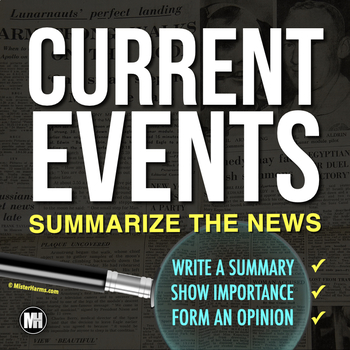
CURRENT EVENTS: News Article Summary , Main Idea, Reading Comprehension | NEWSELA

- Google Apps™

News Article Summary - OSSLT News Report Graphic Organizer OSSLC OLC4O - Digital

News Article Summary - Summarizing a News Report OSSLT - OSSLC OLC4O - Digital

News Article Summary

- Google Drive™ folder

Common Core: Summarizing Informational Texts using News Articles (Lesson)
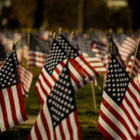
Science News Article Summary Template

- Word Document File

Print & Digital Research Project & Current Events News Article Summary Analysis
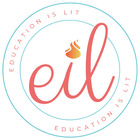
Google Technology News Article Summary - Online Distance Learning

- Google Docs™
- Internet Activities
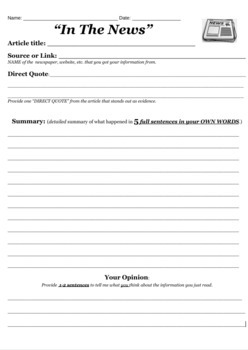
"In the News " student form for reading articles and writing summaries
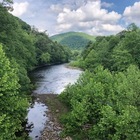
Summarizing a News Article

Business News Article Summary Worksheet
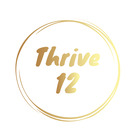
News Article Pre-Writing Lesson Plan - Analysis, Summary , & Writing Organization
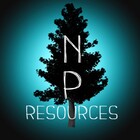
News Article Summary Analysis

Academic Skills Practice: SUMMARIZING News Articles

- Easel Activity
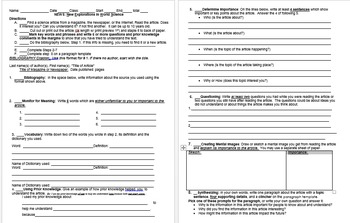
Technology News Article Summary Worksheet
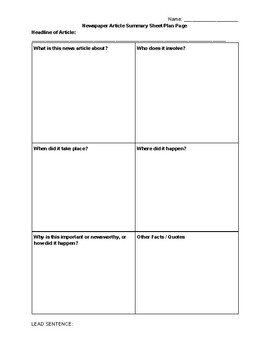
News Article Plan Page and Summary Sheet (Newspaper Reading and Writing)

News Article Summary & Reflection Assignment
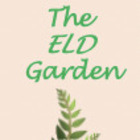
News article summary template
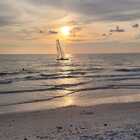
Current Events, WORLD HISTORY LESSON 99/100, Summarizing News Articles

Current Events, RECENT WORLD HISTORY LESSON 15/45, Summarizing News Articles
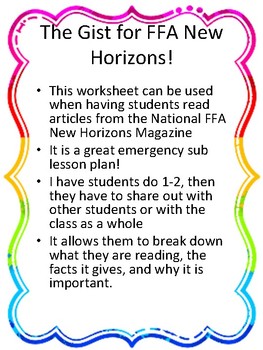
The Gist Article Summary Worksheet for FFA New Horizons

- We're hiring
- Help & FAQ
- Privacy policy
- Student privacy
- Terms of service
- Tell us what you think
- Skip to main content
- Keyboard shortcuts for audio player
- Your Health
- Treatments & Tests
- Health Inc.
- Public Health
Reproductive rights in America
What's at stake as the supreme court hears idaho case about abortion in emergencies.

Selena Simmons-Duffin

The Supreme Court will hear another case about abortion rights on Wednesday. Protestors gathered outside the court last month when the case before the justices involved abortion pills. Tom Brenner for The Washington Post/Getty Images hide caption
The Supreme Court will hear another case about abortion rights on Wednesday. Protestors gathered outside the court last month when the case before the justices involved abortion pills.
In Idaho, when a pregnant patient has complications, abortion is only legal to prevent the woman's death. But a federal law known as EMTALA requires doctors to provide "stabilizing treatment" to patients in the emergency department.
The Biden administration sees that as a direct conflict, which is why the abortion issue is back – yet again – before the Supreme Court on Wednesday.
The case began just a few weeks after the justices overturned Roe v. Wade in 2022, when the federal Justice Department sued Idaho , arguing that the court should declare that "Idaho's law is invalid" when it comes to emergency abortions because the federal emergency care law preempts the state's abortion ban. So far, a district court agreed with the Biden administration, an appeals court panel agreed with Idaho, and the Supreme Court allowed the strict ban to take effect in January when it agreed to hear the case.

Supreme Court allows Idaho abortion ban to be enacted, first such ruling since Dobbs
The case, known as Moyle v. United States (Mike Moyle is the speaker of the Idaho House), has major implications on everything from what emergency care is available in states with abortion bans to how hospitals operate in Idaho. Here's a summary of what's at stake.
1. Idaho physicians warn patients are being harmed
Under Idaho's abortion law , the medical exception only applies when a doctor judges that "the abortion was necessary to prevent the death of the pregnant woman." (There is also an exception to the Idaho abortion ban in cases of rape or incest, only in the first trimester of the pregnancy, if the person files a police report.)
In a filing with the court , a group of 678 physicians in Idaho described cases in which women facing serious pregnancy complications were either sent home from the hospital or had to be transferred out of state for care. "It's been just a few months now that Idaho's law has been in effect – six patients with medical emergencies have already been transferred out of state for [pregnancy] termination," Dr. Jim Souza, chief physician executive of St. Luke's Health System in Idaho, told reporters on a press call last week.
Those delays and transfers can have consequences. For example, Dr. Emily Corrigan described a patient in court filings whose water broke too early, which put her at risk of infection. After two weeks of being dismissed while trying to get care, the patient went to Corrigan's hospital – by that time, she showed signs of infection and had lost so much blood she needed a transfusion. Corrigan added that without receiving an abortion, the patient could have needed a limb amputation or a hysterectomy – in other words, even if she didn't die, she could have faced life-long consequences to her health.
Attorneys for Idaho defend its abortion law, arguing that "every circumstance described by the administration's declarations involved life-threatening circumstances under which Idaho law would allow an abortion."
Ryan Bangert, senior attorney for the Christian legal powerhouse Alliance Defending Freedom, which is providing pro-bono assistance to the state of Idaho, says that "Idaho law does allow for physicians to make those difficult decisions when it's necessary to perform an abortion to save the life of the mother," without waiting for patients to become sicker and sicker.
Still, Dr. Sara Thomson, an OB-GYN in Boise, says difficult calls in the hospital are not hypothetical or even rare. "In my group, we're seeing this happen about every month or every other month where this state law complicates our care," she says. Four patients have sued the state in a separate case arguing that the narrow medical exception harmed them.
"As far as we know, we haven't had a woman die as a consequence of this law, but that is really on the top of our worry list of things that could happen because we know that if we watch as death is approaching and we don't intervene quickly enough, when we decide finally that we're going to intervene to save her life, it may be too late," she says.
2. Hospitals are closing units and struggling to recruit doctors
Labor and delivery departments are expensive for hospitals to operate. Idaho already had a shortage of providers, including OB-GYNS. Hospital administrators now say the Idaho abortion law has led to an exodus of maternal care providers from the state, which has a population of 2 million people.
Three rural hospitals in Idaho have closed their labor-and-delivery units since the abortion law took effect. "We are seeing the expansion of what's called obstetrical deserts here in Idaho," said Brian Whitlock, president and CEO of the Idaho Hospital Association.
Since Idaho's abortion law took effect, nearly one in four OB-GYNs have left the state or retired, according to a report from the Idaho Physician Well-Being Action Collaborative. The report finds the loss of doctors who specialize in high-risk pregnancies is even more extreme – five of nine full time maternal-fetal medicine specialists have left Idaho.
Administrators say they aren't able to recruit new providers to fill those positions. "Since [the abortion law's] enactment, St. Luke's has had markedly fewer applicants for open physician positions, particularly in obstetrics. And several out-of-state candidates have withdrawn their applications upon learning of the challenges of practicing in Idaho, citing [the law's] enactment and fear of criminal penalties," reads an amicus brief from St. Luke's health system in support of the federal government.
"Prior to the abortion decision, we already ranked 50th in number of physicians per capita – we were already a strained state," says Thomson, the doctor in Boise. She's experienced the loss of OB-GYN colleagues first hand. "I had a partner retire right as the laws were changing and her position has remained open – unfilled now for almost two years – so my own personal group has been short-staffed," she says.
ADF's Bangert says he's skeptical of the assertion that the abortion law is responsible for this exodus of doctors from Idaho. "I would be very surprised if Idaho's abortion law is the sole or singular cause of any physician shortage," he says. "I'm very suspicious of any claims of causality."
3. Justices could weigh in on fetal "personhood"
The state of Idaho's brief argues that EMTALA actually requires hospitals "to protect and care for an 'unborn child,'" an argument echoed in friend-of-the-court briefs from the U.S. Conference of Catholic Bishops and a group of states from Indiana to Wyoming that also have restrictive abortion laws. They argue that abortion can't be seen as a stabilizing treatment if one patient dies as a result.
Thomson is also Catholic, and she says the idea that, in an emergency, she is treating two patients – the fetus and the mother – doesn't account for clinical reality. "Of course, as obstetricians we have a passion for caring for both the mother and the baby, but there are clinical situations where the mom's health or life is in jeopardy, and no matter what we do, the baby is going to be lost," she says.
The Idaho abortion law uses the term "unborn child" as opposed to the words "embryo" or "fetus" – language that implies the fetus has the same rights as other people.

Shots - Health News
The science of ivf: what to know about alabama's 'extrauterine children' ruling.
Mary Ziegler , a legal historian at University of California - Davis, who is writing a book on fetal personhood, describes it as the "North Star" of the anti-abortion rights movement. She says this case will be the first time the Supreme Court justices will be considering a statute that uses that language.
"I think we may get clues about the future of bigger conflicts about fetal personhood," she explains, depending on how the justices respond to this idea. "Not just in the context of this statute or emergency medical scenarios, but in the context of the Constitution."
ADF has dismissed the idea that this case is an attempt to expand fetal rights. "This case is, at root, a question about whether or not the federal government can affect a hostile takeover of the practice of medicine in all 50 states by misinterpreting a long-standing federal statute to contain a hidden nationwide abortion mandate," Bangert says.
4. The election looms large
Ziegler suspects the justices will allow Idaho's abortion law to remain as is. "The Supreme Court has let Idaho's law go into effect, which suggests that the court is not convinced by the Biden administration's arguments, at least at this point," she notes.

Trump backed a federal abortion ban as president. Now, he says he wouldn't sign one
Whatever the decision, it will put abortion squarely back in the national spotlight a few months before the November election. "It's a reminder on the political side of things, that Biden and Trump don't really control the terms of the debate on this very important issue," Zielger observes. "They're going to be things put on everybody's radar by other actors, including the Supreme Court."
The justices will hear arguments in the case on Wednesday morning. A decision is expected by late June or early July.
Correction April 23, 2024
An earlier version of this story did not mention the rape and incest exception to Idaho's abortion ban. A person who reports rape or incest to police can end a pregnancy in Idaho in the first trimester.
- Abortion rights
- Supreme Court
- Share full article

St. Vincent Dives Headfirst Into the Darkness
Seven albums and 17 years into an acclaimed solo career, the musician Annie Clark said she craved “a pummeling” on her new LP: “I want something to feel dangerous.”
Supported by

By Lindsay Zoladz
Reporting from New York and Los Angeles
- April 18, 2024
On a recent Tuesday night in a dressing room of the Brooklyn Paramount Theater, Annie Clark, the 41-year-old musician who records as St. Vincent, thumbed through a shelf of secondhand records and sipped a glass of pink champagne. Clark, invited to D.J. the venue’s grand reopening party, was the room’s first inhabitant since a major renovation restored the former movie palace; a pristine, new-car smell lingered.
Holding court among a few members of her team and her 23-year-old sister, Clark was an attentive host in this antiseptic space, ready with a witty remark (the carefully curated LPs were probably “someone’s deceased grandma’s record collection”) or a topped-off beverage. She wore a cream-colored silk blouse, black kitten-heeled shoes and a gauzy black bow tied artfully around her neck.
Even in a moment of relative repose, Clark possessed a feline hyper-awareness of her surroundings. Dave Grohl, who plays drums on two tracks off St. Vincent’s blistering new album “All Born Screaming,” later told me in a phone interview, “When you’re talking to her and you’re looking in those eyes, you can only wonder what reels are whirring in her brain, every second.” He added, amused, “I’ve never seen her with her eyelids half closed.”
Clark is a gifted and nimble guitarist with a dexterously spiky playing style that contrasts with the moony smoothness of her voice. She is also known for the absolute commitment of her live performances. “What she does is so transformative,” said the musician Cate Le Bon, Clark’s close friend of over a decade, in a video interview. “When I see her play, it freaks me out sometimes. I can be even helping her get ready for a show, and it’s like I know nothing of the woman who’s onstage.”

Seven albums and 17 years into an acclaimed solo career, Clark has eked out a singular space in music, occasionally intersecting with the mainstream but for the most part staying uncompromisingly countercultural. She has collaborated with both David Byrne and Dua Lipa ; the riot grrrl pioneers Sleater-Kinney and the post-post-riot-grrrl pop star Olivia Rodrigo . She was one of four female musicians asked to front Nirvana for a night in 2014 when the band was inducted into the Rock & Roll Hall of Fame. “She’s obviously outrageously talented,” Grohl said. “For her to play a Nirvana song was, maybe, a lot less complicated than her own music.”
I first met up with Clark in March, when we drank iced coffee beneath the shady pergola outside her manager’s Hollywood office. She carried a black Loewe handbag and wore a white T-shirt bearing the name of the Swedish punk band Viagra Boys. Clark has, in the past, embodied various characters and donned costumes — a gray-haired cult leader on the cover of her 2014 self-titled album; a louche ’70s glamour girl on her 2021 release “Daddy’s Home” — but these days she’s more or less dressing as herself.
“I’ve certainly played with persona, because I’m queer,” Clark said from behind large sunglasses. “That’s how I play and make sense of my life. All of that just seems absolutely natural to me, to play with persona and identity and to put it in the work.”
But adopting an over-the-top persona, she said, is not something she finds particularly compelling right now. “I’m more interested in that which is raw and essential,” she said. “You’re alive or you’re dead. And if you’re alive, you’d better live it, because it’s short.”
In some sense, Clark is coming off the greatest commercial success of her career, and one that is decidedly more sunshiny than the work she’s known for: During a session with the ubiquitous producer Jack Antonoff, who collaborated on her two previous albums, Clark helped write “Cruel Summer,” the sugar-rush pop song that Taylor Swift released on her 2019 album “Lover.”
“It was something Jack and I worked on and made its way to Taylor and made it back, as those things go,” Clark said. Though it was not initially released as a single, Swift’s formidable fan base has, in the past year, willed it into becoming the unofficial anthem of her Eras Tour and a No. 1 hit four years after its initial release. Clark attended a show in Los Angeles last year and found it surreal to witness 90,000 people singing along. “I’ve never seen anything like it, much less been a part of anything like it,” she said.
And yet, she has no interest in replicating that formula in her own music. In fact, “All Born Screaming,” due April 26, contains some of the heaviest, darkest and weirdest St. Vincent music to date. “That’s what I want from music right now, personally,” Clark said, safe in the shade of the California sun. “I would like a pummeling. I want something to feel dangerous.”
CLARK HAS A reputation for being guarded with journalists, in part because she does not like talking about her personal life. Unsurprisingly, she did not want to specify why themes of grief and loss permeate her new album, because she does not think it would make much difference to the listener. In one of our later conversations, she said that she believed a performer’s duty is simply “to shock and console” ad infinitum. Explaining oneself is superfluous to that job description.
“Generally everyone is misunderstood, and you realize it’s not your job to make people understand you,” Le Bon said. “It’s your job to work and align yourself with your own integrity. I think that’s even harder to harness when you’re an artist as big as Annie. But she does.”
“She’s almost certainly wildly misunderstood by people,” she added, “but there’s a perverse joy in that.”
Le Bon, who is from Wales, met Clark when she was opening for a St. Vincent tour in 2011. She said that at first she found it difficult to get to know Clark: “She was very mysterious, doing yoga a lot of the time,” Le Bon said. Eventually, however, Le Bon found a way into a “really rewarding” friendship. “She’s so honest without agenda, and that’s a rare thing in the world we both exist in,” Le Bon said. “She asks the tough questions, she gives you the real answers.”
Clark was born in Tulsa, Okla., and raised mostly in the Dallas suburbs. She picked up the guitar at 12 and showed a precocious talent; in her early teens, she sat in with her music teacher’s band and chose a song with a high level of difficulty, Jimi Hendrix’s “The Wind Cries Mary.” Her aunt and uncle play as the jazz duo Tuck and Patti, and they brought her on tour one summer as a roadie to show her the realities of touring life. She loved it. “Some of my fondest memories of touring are from those really early days,” she said.
Le Bon said she sees a stark demarcation between the somewhat severe and imperious musical figure “St. Vincent,” and, as she put it, “Annie Clark from Dallas.” Annie Clark from Dallas slowly emerged, in our conversations, as a funny, genial and lightly self-deprecating person who enjoys modern comedy (she quoted “30 Rock” from memory and referenced both “Veep” and “Waiting for Guffman”), is close with her many siblings, and on at least one occasion has drunk too much pink champagne at a party celebrating the reopening of an old Brooklyn theater to make it to Pilates the next morning.
But I witnessed something switch over in her when we met one afternoon at Electric Lady Studios in the West Village, where Clark worked on parts of her last several albums. “This is the room where I recorded the vocals for ‘Violent Times,’ ‘Broken Man’ and ‘Sweetest Fruit,’” she said, referring to songs on the new album. She jumped up from a couch to demonstrate how she’d sung into a particular microphone. Then she got distracted by the studio’s wall of consoles and patch bays.
“Where is this 67 patched at the moment?” she asked herself with sudden ease, like an expat shifting into her native tongue. “Oh yeah, through the 1073. But where’s the 1176?”
“All Born Screaming” began with a sonic puzzle: “How do I render the sound inside my head?” After “hours and hours and hours basically making postindustrial dance music in my studio by myself,” Clark said she realized that the sound in her head was something she would not be able to explain to anyone else. So, although she has been a very involved co-producer on each of her other albums, she decided “All Born Screaming” was something she would have to produce herself.
She approached the task with characteristic zeal. She asked her friend and collaborator Cian Riordan to give her engineering lessons, and he found her an impressively apt pupil. “She would show up, there would be coffee, she’d have a notepad ready,” Riordan said in a phone interview. “She’s extremely focused. There was so much intention with everything.”
She mastered compression, mic shootouts, signal flow. To his dismay, Riordan eventually found Clark starting down a path that he had seen trip up many musicians in the digital age: analog synthesizers.
“Any time someone brings modular synths into the studio, that’s usually my cue to be like, ‘I’m going to go somewhere else, because this is going to be a giant waste of time,’” Riordan said. “But with her, it was really incredible to watch. She would buy all these esoteric things that I didn’t even know about, and I’d come back and they were all synced up and she’d be making music on them. It was fun to see her take it so far.”
Clark said those synths allowed her to build a new sonic world. “You’re actually harnessing electricity,” she explained. Her enthusiasm was palpable; her speech kicked up its tempo. “It’s going through unique circuitry, and you are at the helm, so you’re like a god of lightning.”
CLARK HAS LONG been someone who gets a thrill out of testing her limits and rising to challenges, but around the time of her brightly barbed 2017 album “Masseduction” she was beginning to hit a wall. “It would be like, ‘Sure you can go from Memphis to Beijing to Champaign, Ill., in a weekend,” she said. “Sure you can. See if you can pull this off.” But suddenly, after years of “going, going, going,” she noted, “my body just kind of shut down. My stomach — everything about my stomach hurt.” She stopped drinking and went into what she calls “nun mode,” throwing herself headfirst into studio work.
It wasn’t until the pandemic, though, that she was truly forced to slow down and stay put. She got very good at D.I.Y. projects and installed a lot of light fixtures. She also finished building her home studio and worked on a record that had been gestating for a while. During the pandemic, “Some artists went very interior and quiet, understandably,” she said. “Then, you know,” she laughed. “Some people put on wigs.”
She was referring to “Daddy’s Home,” the heavily stylized ’70s-inspired album she made in response to her father’s release from prison, after he served eight years for conspiracy, fraud and money laundering. “Daddy’s Home” won a Grammy for best alternative album and featured some imaginative experiments, but it was a polarizing release that generated some criticism online.
Clark is aware of this and thinks the album was in part a casualty of bad timing. “The story sort of became, not that I made a record about a difficult familial time, but that, like, ‘OK, good, we have someone to blame for the prison-industrial complex,’” she said. “It’s like, oh wait — that’s not quite what I was going for. But those were the times. Everyone’s lives upturned and everyone was increasingly online and there was a lot of fervor in general.”
For “All Born Screaming,” Clark went back to basics and drew inspiration from “that sort of rock that is the first music that felt like it was mine, and not music from another generation.” She was talking about Nine Inch Nails, Tori Amos and, yes, even that band she helped induct into the Rock & Roll Hall of Fame. While working on the bracing head banger “Flea,” she realized she needed some enormously forceful percussion. The only person she could imagine playing on it was Grohl. So she wrote to him saying as much, and a few days later he was in her home studio, laying down drum tracks for that and the back half of “Broken Man.”
“He’s a great drummer because he’s a great songwriter, right?” Clark said. “He adds so much power and electricity and vibrance, but he’s always supporting the song. He takes a song from a nine to, like, a hundred.”
“All Born Screaming” is sequenced like a journey from darkness into light; its brooding first track is titled, appropriately, “Hell Is Near.” The title-track finale ends up somewhere more comfortably earthbound, but while she was making the song, it was torturing Clark, who just “couldn’t crack the feel of it.” She called Le Bon and played her what she had. Le Bon told her, “Give me a beer, a bass and two hours.”
It worked. The song is bouncy and delightfully off-kilter, strange in St. Vincent’s inimitable, specific way. Clark said the song sprung from the realization that, as she put it, “Joy and suffering are equal, necessary parts of the whole thing. And the only reason to live is for love and the people we love and that’s kind of it.”
“It’s not easy," she added. “But it’s simple.”
Find the Right Soundtrack for You
Trying to expand your musical horizons take a listen to something new..
Kathleen Hanna’s punk rock says a lot. There’s more in her book .
“The Tortured Poets Department” has shifted the Taylor Swift debate .
12 new songs you need to hear, including unearthed Johnny Cash.
Jazz saved the bassist Luke Stewart . Now he’s working to rescue others.
Mdou Moctar ’s guitar is a screaming siren against Africa’s colonial legacy.
Advertisement
‘Infested’ Review: Effective French Chiller Unleashes Spiders on a Parisian Housing Project
French director Sebastien Vanicek’s very accomplished creature feature debut has already won him the plum assignment of a next 'Evil Dead' entry.
By Dennis Harvey
Dennis Harvey
Film Critic
- ‘Any Other Way: The Jackie Shane Story’ Review: Solving The Mystery of a 1960s R&B Talent 24 hours ago
- ‘The Strike’ Review: Doc Chronicles a Battle to Halt Endless Solitary Confinement 2 days ago
- ‘Infested’ Review: Effective French Chiller Unleashes Spiders on a Parisian Housing Project 5 days ago

In an odd quirk of distribution timing, this month has seen the arrival of no less than two imported, semi-comedic thrillers featuring decrepit apartment building invaded by giant spiders. Already playing U.S. theaters is the Australian “Sting,” which is fun, if formulaic. In a whole other class, however, is French “Infested,” a first feature by director Sebastien Vanicek following several impressive shorts. An instant minor genre classic, it is fun and then some — a conceptually unremarkable but resourceful, energetic, stylish and good-humored creature feature with above-average human character interest.
Popular on Variety
Their squabbling hardly makes a stir here, in a boisterous environ of myriad ethnicities and immigrant nationalities crammed into a building whose crumbling infrastructure is much complained about but never repaired. Soon, however, there will be something far worse for everyone to worry about: Kaleb’s exotic new acquisition (whom he dubs “Rihanna”) turns out to be an apex predator. It wastes little time getting loose, then hatching offspring who rapidly expand in size and number, a population boom in which the two-legged tenants play a helpless, grisly role. By the time Kaleb and his peers realize what’s going on, escape is near-impossible — police have sealed off the building for quarantine.
Vanicek has said he conceived the film in part to counter the usual screen image of banlieue housing complexes as hubs for nothing but gangs, drugs and crime. While those ills exist, his own life experience underlined how they also sustain complex multicultural communities that despite all problems are largely harmonious and functional. There’s a fond humor to “Infested’s” portrait of one such microcosm, with people of African, Middle Eastern, Asian and other backgrounds getting along in argumentative yet neighborly style. The sourest note is struck by one firmly xenophobic white male resident (Emmanuel Bonami) who’s convinced everyone else is a drug kingpin.
Christine immediately wins us over with his motormouthed protagonist, and the other leads are equally likable. Vanicek has an almost Preston Sturges-like knack for whipping his ensemble into amusing frenzies of verbal combat. When the astute, urgent editorial pace stops at one later point to allow a moment of collective grief, it’s a measure of this “monster bug” movie’s heart that the tearful pause is actually rather touching.
Still, the main attraction here is seeing a large human habitat turn into a giant icky spider web, and “Infested” certainly works on that visceral level of creepy-crawly dread, panic and recoil. There are scary, hairy set-pieces, notably one with Lila trapped in a shower stall, then a perilous group walk down a basement corridor.
Throughout, the director and his collaborators maintain a taut balance between comedy, character, suspense and thrills, with first-rate contributions on presumably modest means from all tech and design departments. Creature effects are sharp and plentiful, yet kept judiciously brief. There’s atmospheric tension to spare in Alexandre Jamin’s cinematography and Arnaud Bouniort’s production design. A giddily nerve-jangling overall effect is nicely heightened by Douglas Cavanna and Xavier Caux’s original score, plus a few choice Gallic hip-hop tracks.
If the story’s last act in a parking garage is arguably a bit anticlimactic after preceding events, “Infested” remains a smart treat for horror buffs, its tonal control capped by an unexpectedly low-key yet perfect fadeout.
Reviewed online, April 22, 2024. Running time: 106 MIN. (Original title: “Vermines”)
- Production: (France) A Shudder release of a My Box Films production, in co-production with Tandem, in association with Netflix, France Televisions, Centre National du Cinema et de l’Image Animée, Impact Film, Cinécap 6, Cineaxe 5, Cofimage 34, SG Image 2022, Indiefilms 12. Producer: Harry Tordjman.
- Crew: Director: Sebastien Vanicek. Screenplay: Florent Bernard, Sebastien Vanicek, from an idea by Vanicek. Camera: Alexandre Jamin. Editors: Nassim Gordji Tehrani, Thomas Fernandez. Music: Douglas Cavanna, Xavier Caux.
- With: Theo Christine, Sofia Lesaffre, Jerome Niel, Lisa Nyarko, Finnegan Oldfield, Marie-Philomene Nga, Mahamadou Sangare, Abdallah Moundy, Ike Zacsongo-Joseph, Emmanuel Bonami, Xing Xing Cheng, Samir Nait, Malik Amraoui.
More From Our Brands
Nypd descends on columbia campus, arrests protesters, woodford reserve’s $1,000 mint julep cups are back, details matter: ncaa settling house and carter won’t end legal woes, be tough on dirt but gentle on your body with the best soaps for sensitive skin, monday ratings: all american posts season high in audience, sytycd eyes low, verify it's you, please log in.

IMAGES
VIDEO
COMMENTS
A secondary idea and any supporting details. The who, what, where when, how and why of the article. Important events and the timeline of those events. Problems and their resolutions. Any caveats ...
Look at the graphical abstract from the primary research paper and answer the following questions, comparing and contrasting it with your visual summary of the Science News article. 1.
Science News features daily news articles, feature stories, reviews and more in all disciplines of science, as well as Science News magazine archives back to 1924.
The news feed at Science Buddies makes it easy to locate science news articles, and Google Classroom teachers can make reading assignments directly from the Science Buddies site. ... To make sure the assignment was actionable, I asked them to write a short summary in the "comments" on the assignment in Google Classroom before they "turned in ...
An educated person reads throughout an entire lifetime. Articles should be from a respectable source such as: Scientific American, Discover, Science News, Natural History, Smithsonian, Bioscience, etc. There are two methods of submission for reviewing at article, consult your instructor on specific details for your assignment. Science News Sources
1. The article defines "materials"as "substances having properties which make them useful in machines, structures, devices and products.". List five examples of materials given in the ...
Educator guides are groups of lesson plans all focused on the same Science News print issue. These guides are designed to help you integrate STEM journalism articles into your classroom by ...
Founded in 2003, Science News Explores is a free, award-winning online publication dedicated to providing age-appropriate science news to learners, parents and educators. The publication, as well as Science News magazine, are published by the Society for Science, a nonprofit 501(c)(3) membership organization dedicated to public engagement in scientific research and education.
As a possible extension, students can write a 500-word news article based on an open-access scientific study. Approximate class time: 1 class period. Supplies: Paper. Pencils. Whiteboard (optional ...
Apply what you have learned. Ask your teacher to assign an open-access scientific journal study. Read the study and consult additional primary and secondary sources as needed to write and submit a ...
Science news articles are a great way to learn about new ideas, discoveries, and research. However, it's important. to evaluate the authority and credibility of sources of information. In this activity, students practice their reading. comprehension and source evaluation skills by answering a series of questions about a science news article.
The assignment is, of course, very much homework. It includes plenty for her students to read, new vocabulary words to define and questions to answer, all on a standard form. ... pasting an article on one page and using the facing page to create a summary that combines text and illustration. They can then formulate questions for each paragraph ...
Using Science News as a teaching tool promotes writing about science, talking about science, and broadening students' views about what science is. This article describes an ongoing assignment in which students choose one article from Science News each week and write a brief summary and explanation of why they picked that article.
For the summary portion (1), rather than describe everything in the article, very briefly share only the main points of the article. The summary should be no more than a brief paragraph. In your close reading (2)—the heart of this assignment—you should include and provide evidence for the following information:
Description. In this activity, students evaluate a science news article to determine whether it is a trustworthy source of information. Science news articles are a great way to learn about new ideas, discoveries, and research. However, it's important to evaluate the authority and credibility of sources of information.
Class #7: The Profile: Writing about Science by Writing Assignment #7: Sketch News Story. Write a preliminary sketch of a news story for one of these articles. Readings: "Map the Gap" from the journal Public Health Action. "Map the Gap" is a standard journal article; journal articles follow roughly the same format from journal to ...
Science Article Summary Assignment. by . Colorado Science Guru. $6.00. Word Document File. ... Student use this to analyze and summarize a science news article of their choice. Subjects: Biology, Physical Science, Science. Grades: 5 th - 10 th. Types: Graphic Organizers, Handouts, Printables.
Science in the News Rubric. Science in the News Rubric. For this ongoing assignment, students must use the teacher recommended sites (OR an approved magazine or newspaper) to choose a science news topic, summarize the main idea, reflect on the importance of the article, and present it to the class. Rubric Code: HX3B23W. By neidra135. Ready to use.
The assignment is to choose and read one of the articles listed below. Once you have finished reading the article, you are to write a summary of the main points in the article. This assignment will be graded on how much I think that you have learned about Earth Science from reading the article. I therefore check to see that the following ...
1 News Article News Article Review Assignment Amiere I. Martin Liberty University Author Note Amiere I. Martin Department of Higher Education, Liberty University. Correspondence concerning this article should be addressed to Amiere I. Martin Email: [email protected]. 2 News Article Introduction In the newspaper article published by the ...
Breaking science news and articles on global warming, extrasolar planets, stem cells, bird flu, autism, nanotechnology, dinosaurs, evolution -- the latest discoveries ...
This is one of my favorite lessons I've done in my classroom because it allows my students to practice a skill that they often don't get the opportunity to until they enter colleg
This Current Events Summary is an excellent tool for students to get involved with the news and the current events of the week. A simple writing format helps students find, summarize, and write opinions about current news stories and events. I find this activity to be a practical filler for various social studies courses.
Here's a summary of what's at stake. 1. Idaho physicians warn patients are being harmed. ... Shots - Health News The science of IVF: What to know about Alabama's 'extrauterine children' ruling.
The Shenzhou-18 crew will stay in the Tiangong space station until late October. The Tianzhou-8 cargo ship and the Shenzhou-19 crewed spaceship are scheduled to arrive during their six-month ...
April 18, 2024. On a recent Tuesday night in a dressing room of the Brooklyn Paramount Theater, Annie Clark, the 41-year-old musician who records as St. Vincent, thumbed through a shelf of ...
Music: Douglas Cavanna, Xavier Caux. With: Theo Christine, Sofia Lesaffre, Jerome Niel, Lisa Nyarko, Finnegan Oldfield, Marie-Philomene Nga, Mahamadou Sangare, Abdallah Moundy, Ike Zacsongo-Joseph ...